Engineered wood floors are a popular choice for their durability, aesthetic appeal, and resistance to moisture compared to traditional hardwood floors. However, maintaining their shine and beauty requires proper care and attention. With the right cleaning methods and maintenance tips, you can keep your engineered wood floors looking as radiant as the day they were installed. This guide will walk you through the essential steps of how to make engineered wood floors shine.
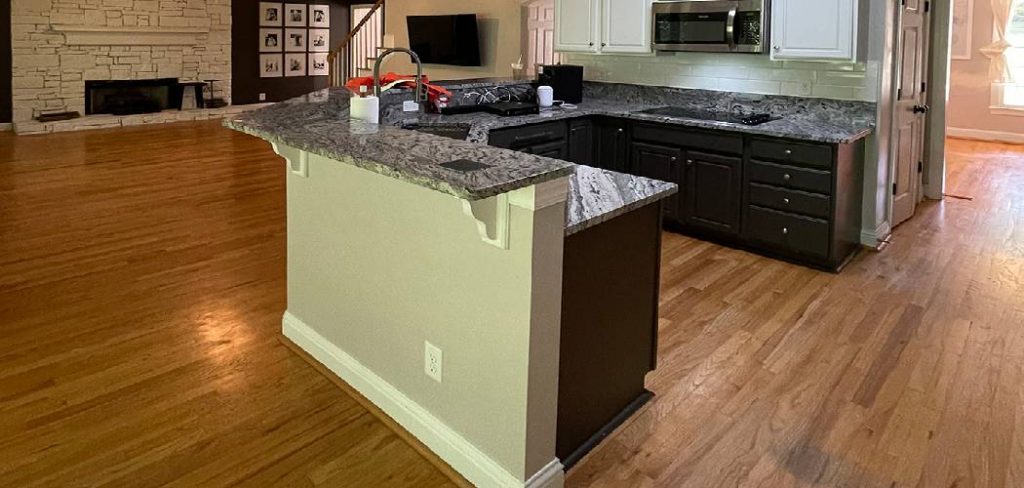
Understanding Engineered Wood Flooring
Engineered wood flooring is a versatile and innovative alternative to traditional hardwood floors. It is composed of multiple layers, typically featuring a hardwood veneer on the surface and a core made from high-quality plywood or fiberboard. This layered construction provides exceptional stability, making it less susceptible to warping or swelling due to changes in humidity and temperature. Additionally, engineered wood floors come in a wide variety of finishes, wood species, and plank sizes, allowing homeowners to achieve the look they desire. Unlike solid hardwood, these floors can often be installed in areas prone to moisture, such as basements or kitchens, offering both beauty and durability. Understanding its construction and benefits is key to ensuring proper maintenance and long-lasting performance.
Tools and Materials You’ll Need
When installing engineered wood flooring, having the right tools and materials is essential for achieving a professional and lasting result. Here’s a list of what you’ll need:
Tools:
- Tape Measure – To ensure accurate measurements of the room and floorboards.
- Utility Knife – For cutting underlayment or trimming materials as needed.
- Circular Saw or Jigsaw – To cut the flooring planks to fit edges and corners precisely.
- Rubber Mallet – For gently securing the planks together without causing damage.
- Flooring Pull Bar – Helps tighten planks in hard-to-reach areas.
- Tapping Block – Used to ensure snug fits between planks without damaging the edges.
- Chalk Line – To mark straight lines for precise alignment during installation.
- Level – Ensures the subfloor is even for proper installation.
Materials:
- Engineered Wood Planks – Choose your preferred finish, wood species, and style.
- Underlayment – Provides a moisture barrier and cushioning under the flooring.
- Adhesive or Flooring Nails/Staples – Depending on your installation method (glue-down, nail-down, or floating).
- Spacer Blocks – To maintain expansion gaps around the edges for natural wood movement.
- Moisture Barrier (if needed) – Protects against moisture damage in specific installation areas.
Double-check that all tools and materials are ready before you begin, as this will save time and ensure a smoother installation process. Proper preparation is the key to success!
10 Methods How to Make Engineered Wood Floors Shine
1. Sweep or Vacuum Daily with Soft Attachments
Dirt and debris are the number-one enemies of shiny engineered wood floors. Tiny particles act like sandpaper underfoot, slowly scratching the finish and robbing your floors of their natural glow. To prevent this, sweep your floors daily using a soft-bristle broom, or better yet, vacuum with a hardwood floor attachment. Avoid vacuum heads with rotating brushes or beater bars, as they can scratch the surface. Keeping the surface clear of grit and dust is a foundational step to preserving the floor’s shine and reducing the need for more aggressive treatments later on.
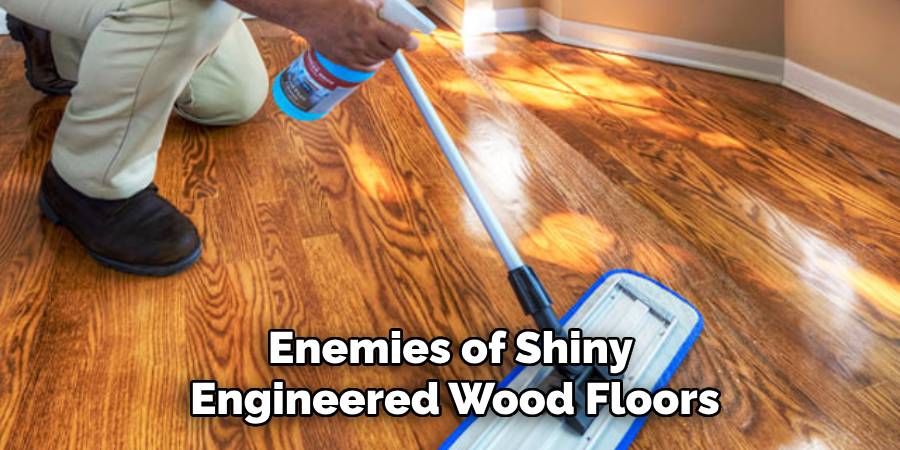
2. Use a Damp Microfiber Mop for Regular Cleaning
One of the best ways to clean engineered wood without damaging the finish is by using a damp (not wet) microfiber mop. These mops are specifically designed to pick up fine dust and grime while being gentle on the surface. Dampen the mop with warm water and wring it out thoroughly before use—standing water can seep into seams and cause damage. Microfiber mops glide smoothly and do not leave streaks, helping to maintain a clean and slightly polished appearance with each pass. This method is ideal for weekly or bi-weekly maintenance.
3. Choose a Floor Cleaner Made for Engineered Wood
Using the wrong cleaning product can strip away the finish and dull the floor’s appearance. Avoid harsh chemicals, vinegar, ammonia, or wax-based cleaners. Instead, select a cleaner specifically formulated for engineered wood or hardwood floors. These products are pH-balanced and designed to clean without leaving a residue. Spray a small amount directly on the mop or onto the floor in sections, then wipe clean with a microfiber pad. Following the grain as you mop ensures even distribution and enhances the natural look of the wood.
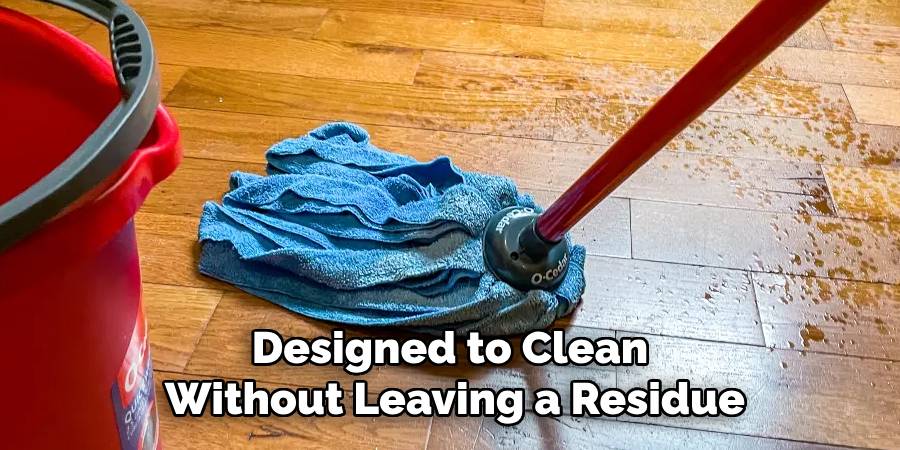
4. Buff the Floor with a Dry Microfiber Cloth
After mopping, a simple yet effective way to enhance shine is to buff the floor with a dry microfiber cloth or pad. This step removes any remaining moisture, eliminates streaks, and brings out the reflective qualities of the finish. Start in one corner of the room and work your way across in long, smooth strokes. Buffing not only boosts the floor’s visual appeal but also minimizes the appearance of light smudges or footprints, especially on darker-toned engineered wood.
5. Use Floor Polish or Restorer Sparingly
If your engineered wood floors have lost their shine over time despite regular cleaning, consider applying a specially formulated floor polish or restorer. Choose one that is safe for use on polyurethane-coated floors, which is the most common finish for engineered wood. Apply a thin, even layer with a flat mop, following the grain of the wood. Allow it to dry thoroughly before walking on it. This method can restore luster and fill in micro-scratches temporarily, but should only be used a few times per year to avoid buildup.
6. Address Spills and Stains Promptly
Allowing liquids or sticky substances to sit on your floors can lead to dull spots or hazing. Clean up spills immediately using a soft cloth or paper towel. For sticky messes, dampen a cloth with warm water and a drop of mild dish soap. Gently wipe the area and then follow up with a clean, damp cloth to remove residue. Dry thoroughly. Prompt action not only prevents stains but also helps keep the surface clean and more reflective, especially in high-traffic kitchen or dining areas.
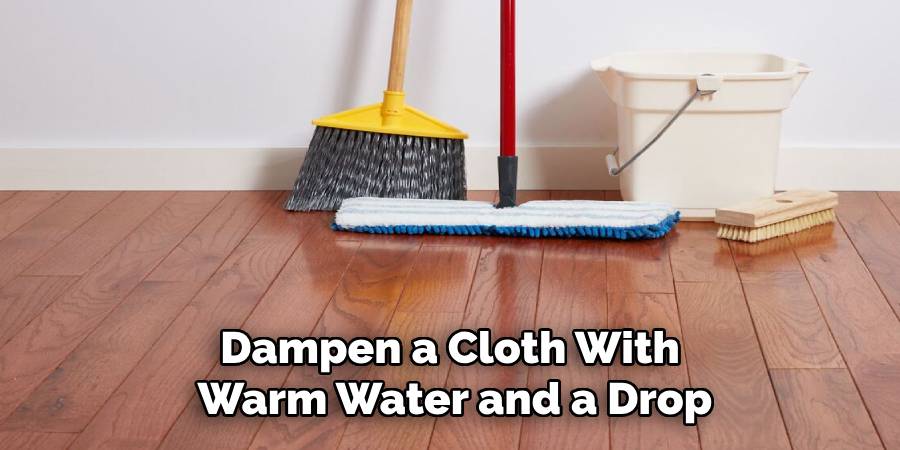
7. Place Rugs and Mats Strategically
Preventative care is just as important as cleaning when it comes to maintaining shine. Place rugs at entryways and mats near sinks or cooking areas to catch dirt and absorb moisture. Choose rugs with non-slip, non-rubber backings to avoid staining or scratching the floor. Area rugs reduce wear and tear in high-use zones and help your floors stay clean and glossy longer. Additionally, they act as a buffer, preventing sharp objects or furniture legs from dulling the surface.
8. Protect the Floor from Furniture Scratches
Scratches and scuffs from furniture are a major cause of dull spots on engineered wood. To prevent this, attach felt pads to the legs of chairs, tables, and sofas. Replace them periodically, as they wear down or collect debris. Avoid dragging furniture across the floor; lift it instead. In rooms where furniture is frequently moved—like dining rooms—consider using furniture sliders or rugs underneath to maintain a consistent sheen without interruption from deep gouges or worn paths.
9. Control Indoor Humidity
Engineered wood is more stable than solid hardwood, but it can still be affected by changes in humidity. Excess moisture can dull the finish, cause swelling, or lead to foggy spots, while extremely dry conditions may make the wood more prone to cracking or shrinking. Maintain an indoor humidity level between 35% and 55% year-round using a humidifier or dehumidifier, depending on your climate. Consistent humidity helps preserve the integrity of the finish and keeps the floors looking smooth and glossy.
10. Schedule Occasional Professional Cleaning
For deep restoration or when DIY methods no longer yield results, consider hiring a professional to clean and refinish your engineered wood floors. Professionals use specialized equipment and non-abrasive techniques to safely strip away buildup and bring back the original shine. Some services offer light buffing or polishing, while others may reapply protective coatings. This is especially useful if your floors are older, heavily used, or have dulled unevenly. Investing in professional care every few years can breathe new life into your flooring and extend its beauty for decades.
Things to Consider When Hiring a Professional
When hiring a professional to care for your engineered wood floors, there are several factors to keep in mind. Start by researching their expertise and reading reviews or testimonials to ensure they have experience with engineered wood surfaces. Confirm what techniques and products they use, as harsh chemicals or abrasive methods can damage the floors. Ask for a detailed estimate upfront, including any potential additional costs, to avoid surprises. It’s also important to inquire about their warranty or guarantee policy for the work performed. Finally, ensure they are licensed and insured, providing peace of mind that your floors are in good hands.
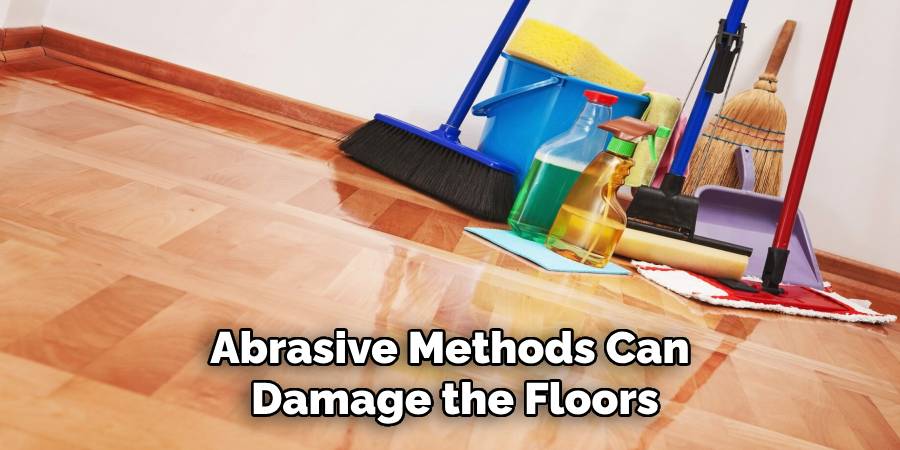
Conclusion
Keeping engineered wood floors shiny doesn’t require aggressive chemicals or frequent refinishing. Instead, a consistent approach rooted in gentle cleaning, immediate spill control, and proper environmental care can keep your floors looking vibrant and reflective for years. From daily sweeping to occasional professional restoration, each method plays a role in preserving the elegance of engineered wood. Thanks for reading our blog post on how to make engineered wood floors shine! We hope you found it helpful and informative.
About the Author
Adrian Green, a lifelong woodworking enthusiast, shares his passion for the craft through The Woodenify Blog. With a foundation built on years of hands-on experience in his father’s woodworking shop, Adrian is dedicated to helping others learn and grow in the world of DIY woodworking. His approach to woodworking combines creativity, practicality, and a deep appreciation for the art of building with your own hands. Through his blog, he inspires individuals of all skill levels to embark on their own woodworking journeys, creating beautiful, functional pieces of furniture and décor.
Professional Focus
- Specializes in DIY woodworking projects, from furniture to home décor.
- Provides step-by-step guides and practical tutorials for woodworkers of all skill levels.
- Dedicated to helping readers build confidence and skill through easy-to-follow instructions and tips.
- Passionate about fostering a community of makers who can share, learn, and grow together.
Education History
- University of Craft and Design – Bachelor of Fine Arts (BFA) in Woodworking and Furniture Design
- Woodworking Apprenticeships – Extensive hands-on training with skilled craftsmen to refine carpentry and furniture making techniques.
- Online Courses & Masterclasses – Continued education in advanced woodworking techniques, design principles, and specialized tools
Expertise:
- DIY woodworking, carpentry, furniture making, and home décor projects.
- Creating accessible tutorials and guides for beginner to advanced woodworkers.
- Sharing the joys and satisfaction of woodworking, from raw materials to finished products.
